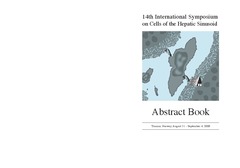The anticancer activity of lytic peptides is inhibited by heparan sulfate on the surface of the tumor cells
Permanent link
https://hdl.handle.net/10037/2182Date
2009-06-15Type
Journal articleTidsskriftartikkel
Peer reviewed
Abstract
Background: Cationic antimicrobial peptides (CAPs) with antitumor activity constitute a
promising group of novel anticancer agents. These peptides induce lysis of cancer cells through
interactions with the plasma membrane. It is not known which cancer cell membrane components
influence their susceptibility to CAPs. We have previously shown that CAPs interact with the two
glycosaminoglycans (GAGs), heparan sulfate (HS) and chondroitin sulfate (CS), which are present
on the surface of most cells. The purpose of this study was to investigate the role of the two GAGs
in the cytotoxic activity of CAPs.
Methods: Various cell lines, expressing different levels of cell surface GAGs, were exposed to bovine lactoferricin (LfcinB) and the designer peptide, KW5. The cytotoxic effect of the peptides was investigated by use of the colorimetric MTT viability assay. The cytotoxic effect on wild type CHO cells, expressing normal amounts of GAGs on the cell surface, and the mutant pgsA-745, that has no expression of GAGs on the cell surface, was also investigated.
Results: We show that cells not expressing HS were more susceptible to CAPs than cells expressing HS at the cell surface. Further, exogenously added heparin inhibited the cytotoxic effect of the peptides. Chondroitin sulfate had no effect on the cytotoxic activity of KW5 and only minor effects on LfcinB cytotoxicity.
Conclusion: Our results show for the first time that negatively charged molecules at the surface of cancer cells inhibit the cytotoxic activity of CAPs. Our results indicate that HS at the surface of cancer cells sequesters CAPs away from the phospholipid bilayer and thereby impede their ability to induce cytolysis.
Methods: Various cell lines, expressing different levels of cell surface GAGs, were exposed to bovine lactoferricin (LfcinB) and the designer peptide, KW5. The cytotoxic effect of the peptides was investigated by use of the colorimetric MTT viability assay. The cytotoxic effect on wild type CHO cells, expressing normal amounts of GAGs on the cell surface, and the mutant pgsA-745, that has no expression of GAGs on the cell surface, was also investigated.
Results: We show that cells not expressing HS were more susceptible to CAPs than cells expressing HS at the cell surface. Further, exogenously added heparin inhibited the cytotoxic effect of the peptides. Chondroitin sulfate had no effect on the cytotoxic activity of KW5 and only minor effects on LfcinB cytotoxicity.
Conclusion: Our results show for the first time that negatively charged molecules at the surface of cancer cells inhibit the cytotoxic activity of CAPs. Our results indicate that HS at the surface of cancer cells sequesters CAPs away from the phospholipid bilayer and thereby impede their ability to induce cytolysis.
Publisher
BioMed CentralCitation
BMC Cancer 2009, 9:183Metadata
Show full item recordCollections
The following license file are associated with this item:
Related items
Showing items related by title, author, creator and subject.
-
Influence of environmental tonicity changes on lipophilic drug release from liposomes
Nikolaisen, Trygg Einar (Mastergradsoppgave; Master thesis, 2018-05-15)Introduction: Liposomes as drug delivery systems has been widely studied as a way to solubilize poorly soluble drugs, reduce side effects of chemotherapeutics and increase circulation time in vivo. Since the first descriptions of liposomes over 60 years ago, they have shown tendencies to shrink and swell when the external environment of the liposomes is altered. This phenomenon has been studied in ... -
Prognostic Impacts of Angiopoietins in NSCLC Tumor Cells and Stroma : VEGF-A Impact Is Strongly Associated with Ang-2
Andersen, Sigve; Dønnem, Tom; Al-Shibli, Khalid Ibrahim; Al-Saad, Samer; Stenvold, Helge; Busund, Lill-Tove; Bremnes, Roy M. (Journal article; Tidsskriftartikkel; Peer reviewed, 2011)Angiopoietins and their receptor Tie-2 are, in concert with VEGF-A, key mediators in angiogenesis. This study evaluates the prognostic impact of all known human angiopoietins (Ang-1, Ang-2 and Ang-4) and their receptor Tie-2, as well as their relation to the prognostic expression of VEGF-A. 335 unselected stage I-IIIA NSCLC-patients were included and tissue samples of respective tumor cells and ... -
14th International Symposium on Cells of the Hepatic Sinusoid
Smedsrød, Bård (Book; Bok, 2008-08-31)Abstract book of the symposium


 English
English norsk
norsk


